History
The WSU College of Veterinary Medicine was founded in 1899 beginning with a single $60 shed. It is the fifth oldest veterinary college in the United States and sixth oldest among the veterinary colleges in the U.S. and Canada.
Today, our college has grown to be a leader in veterinary and biomedical research and education. In addition to the professional veterinary medical degree, the college offers pre-health undergraduate degrees in biochemistry, genetics and cell biology, microbiology, and neuroscience and graduate degrees in immunology & infectious disease, integrative physiology, veterinary clinical and translational sciences, molecular biosciences, and neuroscience.
-
The college celebrates its 125th anniversary. It is the fifth-oldest veterinary college in the United States.
-

The college welcomes Maurice Cottman as its first director of diversity, equity, and inclusion.
-

Worthman Museum renamed. Named in honor and memory of Dr. Robert Worthman in October 1982, and later, Paul Johnson in 2021, the Worthman-Johnson Veterinary Anatomy Teaching Museum on the WSU Pullman campus harbors several hundred animal specimens.
-

A new research and surveillance facility adjacent to the Paul G. Allen Center for Global Health, now houses the Washington Animal Disease and Diagnostic Laboratory. A founding member of the National Animal Health Laboratory Network, the laboratory provides state-of-the-art diagnostic services, consultation, disease surveillance, and outreach to safeguard animal health, the food supply, and public health.
Construction of the $61.3M, 62,000 square-foot building was completed in spring 2021.
-

Dori Borjesson is the college’s first female dean.
-

Robert H. Mealey, interim dean
-
The Washington State University College of Veterinary Medicine’s veterinary-only simulation program becomes the first to be accredited by the Society for Simulation in Healthcare.
-
In 2017, the Washington State Legislature mandated Washington State University’s College of Veterinary Medicine as the state lead in developing a program to monitor and assess causes of and potential solutions for elk hoof disease.
-
The Washington-Idaho-Montana-Utah Regional Program in Veterinary Medicine is formed. The first regional program started in 1979 as the Washington-Oregon-Idaho Regional Program in Veterinary Medical Education. Oregon State University left the program when it formed its own College of Veterinary Medicine in 2001. Montana State University joined the regional program in 2013 and Utah State University in 2014.
-

The Veterinary and Biomedical Research Building, which houses the Department of Integrative Physiology and Neuroscience, is completed. The building provides 77,250 square feet of state-of-the-art space for the health science teaching and research programs.
-
The Stauber Raptor Facility is renamed to honor veterinary professor and raptor specialist Dr. Erik Stauber, who devoted 40 years to WSU and caring for raptors. The facility houses recovering and resident birds in the Raptor Rehabilitation Program at WSU.
-

The Paul G. Allen School for Global Animal Health (now the Paul G. Allen School for Global Health) is created to find innovative strategies for the treatment and control of diseases affecting public health, economic development, and human opportunity. The Paul G. Allen Center for Global Animal Health is a 62,000-square-foot, three-story flagship research building that houses a state-of-the-art infectious disease research center for investigating emerging diseases throughout the world.
-

The School of Molecular Biosciences, established in 1999, and the Center for Reproductive Biology joined the college to create a larger group of biomedical research scientists and scientific resources. The school is housed in the state-of-the-art Biotechnology–Life Sciences building.
-

Bryan K. Slinker, dean
-
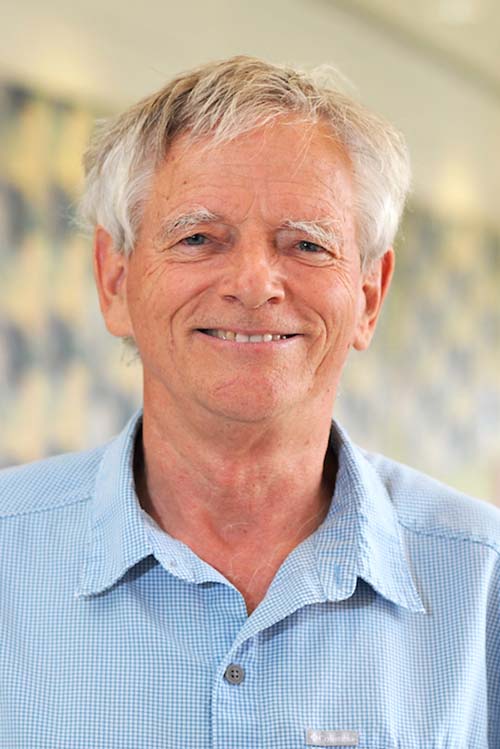
Warwick M. Bayly, dean
-

The Animal Disease Biotechnology Facility opens. The building houses offices for the Department of Veterinary Clinical Sciences. It is unique among all U.S. Department of Agriculture buildings and facilities projects because its focus is on the use of molecular biology to resolve diseases in agricultural animals with application where appropriate to human health.
-
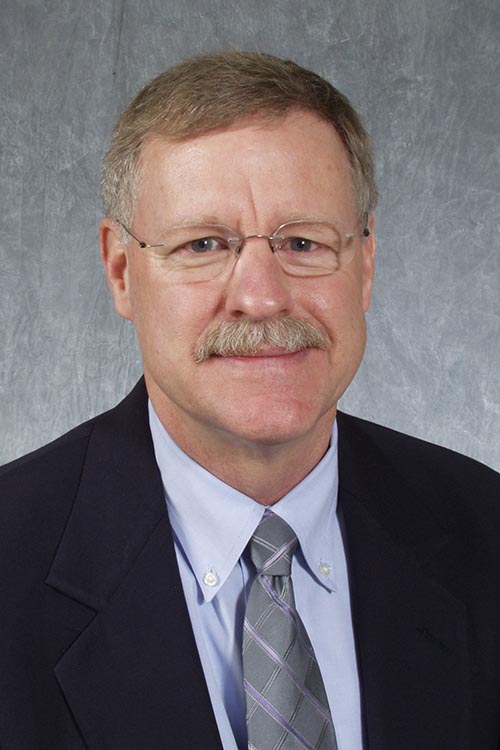
Terry F. McElwain, interim dean
-

The new 110,000-square-foot Veterinary Teaching Hospital is opened. This $38 million facility is a major site of teaching, research, and animal care activities in the college.
-

A Centennial History: The first century of the WSU College of Veterinary Medicine 1895-1995. -
The Center for the Study of Animal Well-Being at WSU is a cooperative effort between the College of Veterinary Medicine and the Department of Animal Sciences in the then College of Agriculture and Home Economics.
-

The Caring Call statue is dedicated to the WSU campus. It is the only bronze statue in the country depicting a human administering medical care to an animal. -

Borje K. Gustafsson, dean
-
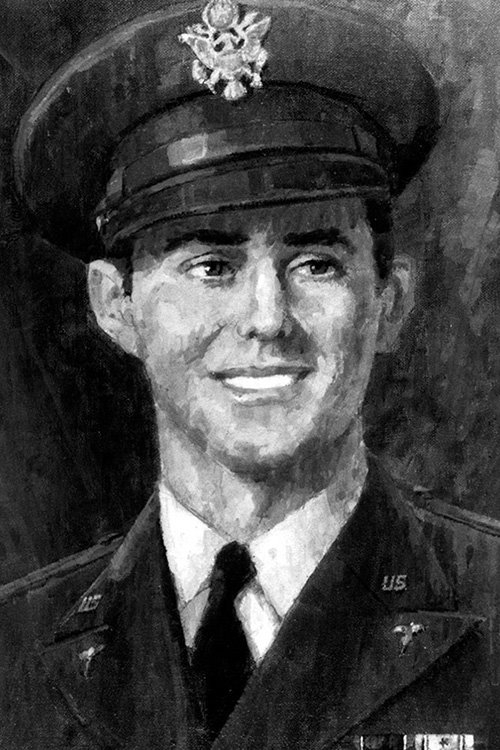
The Mickelsen Lounge in Bustad Hall was dedicated to honor U.S. Army Captain Clayton Mickelsen (’39 DVM). He was awarded the Army’s second highest decoration, the Distinguished Service Cross, for his bravery during World War II. He was eventually captured and taken to a Japanese war camp in Kyushu, Japan. He died on February 10, 1945, in a hospital in Moji just two weeks before the camp was liberated by U.S. forces.
-
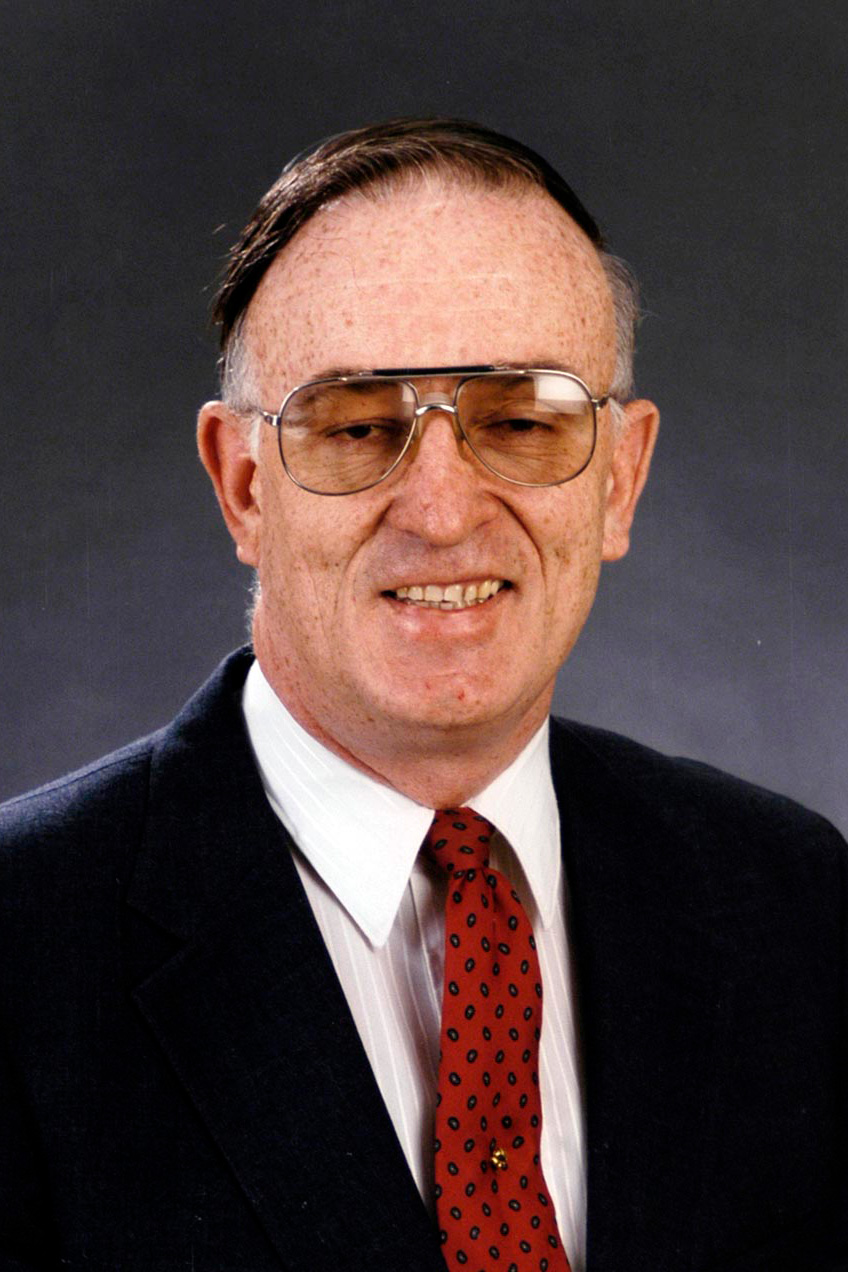
Robert B. Wilson, dean
-

Robbie, an 18-hand, 2,000-pound Clydesdale, began serving as a mascot for the College, putting in countless hours of public appearances in addition to helping train veterinary students. Robbie was donated to WSU after being diagnosed with shivers, a chronic and uncurable neuromuscular disorder.
-
The Veterinary Anatomy Teaching Museum in McCoy Hall is named for professor emeritus, Dr. Robert Worthman.
-
For the first time in the college’s history, more female than male students apply and are admitted into the DVM program. The trend continues today with female enrollment representing about 70% of all veterinary students.
-
The Hitchcock Research Track is dedicated on the WSU campus. It is the only horseracing facility of its type built for research purposes on a university campus in the United States.
-
The Washington-Oregon-Idaho Regional Program in Veterinary Medical Education is formed after more than seven years of discussion and preliminary agreements. Known as WOI, the program also serves Alaska, Arizona, Hawaii, Montana, Nevada, New Mexico, Utah, and Wyoming students through the Western Interstate Commission for Higher Education (WICHE) compact.
-

A modern veterinary science building is completed and dedicated on the WSU campus. In 1984, it is renamed Bustad Hall for Leo K. Bustad. -
The Washington Animal Disease Diagnostic Laboratory (WADDL) is officially created with new funds from the Legislature and existing resources. Today, it is a fully accredited facility and one of only a handful integrated with veterinary schools nationwide.
-

Leo K. Bustad, dean
-

J. A. Henderson, dean
-
D.C. Blood and J.A. Henderson published the first edition of Veterinary Medicine. The book goes on to become the authoritative text on large animal medicine for a generation of veterinary students. Henderson was dean of the WSU College of Veterinary Medicine from 1963 to 1973.
-
Distinguished veterinary pathologists H.A. Smith and T.C. Jones (’34 DVM) publish the first edition of their landmark text, Veterinary Pathology.
-
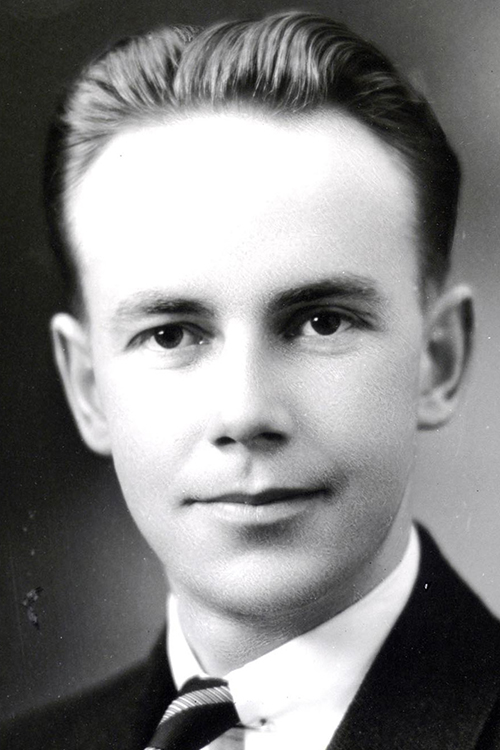
Ernest C. Stone, dean
-

Recently completed animal clinic and classroom-laboratory buildings, McCoy Hall and Wegner Hall, are named after J.E. McCoy and E.E. Wegner, respectively. Both served as deans of the college during their careers. -
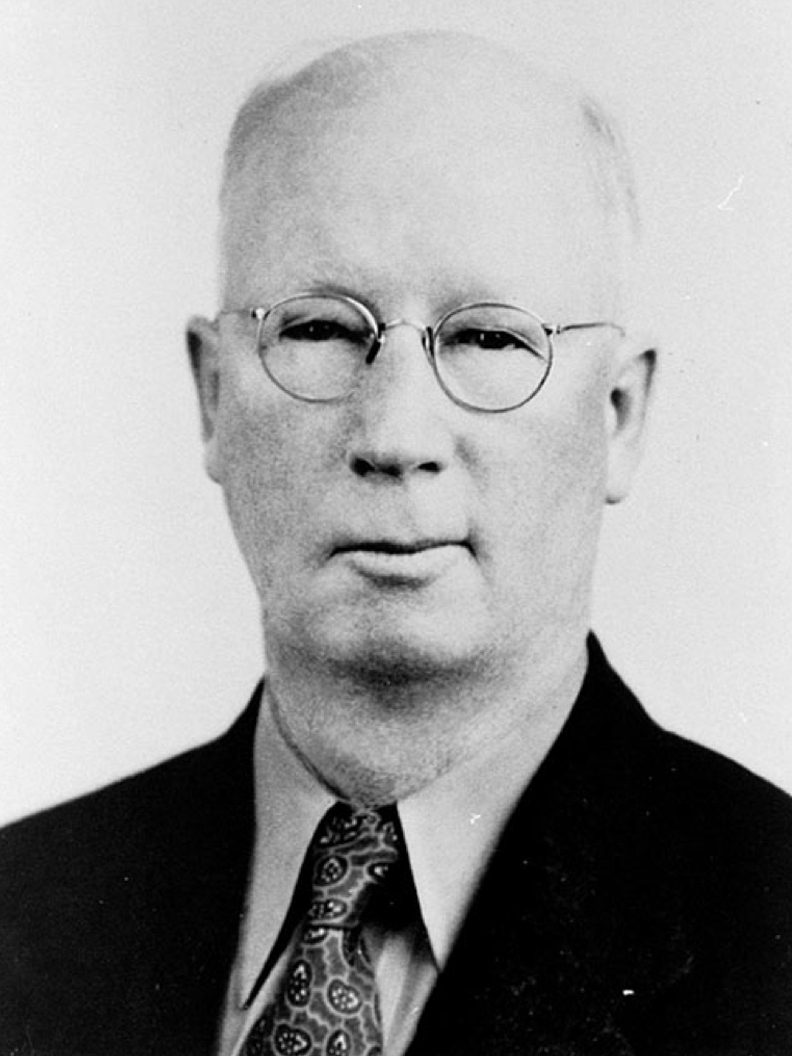
John E. McCoy, chair of faculty committee that served in lieu of a dean
-
The first Junior Review is presented to the veterinary faculty and students. It is a lighthearted series of skits and musical presentations which lampoon the authority figures connected with veterinary education in Washington.
-

Roy E. Nichols, dean
-
The first graduate degree ever awarded by the college is earned by one of its alumni. John Gorham (’46 MS) earns a Master of Science degree in pathology under D.R. Cordy. Later the pair go on to discover a rickettsia that is the cause of salmon disease in dogs and foxes.
-

The Army Specialized Training Program is broken up. Juniors are discharged in the summer and the new senior class moves into the Sigma Phi Epsilon house and Ferry Hall. Following discharge from ASTP, most apply for ranking as a 1st lieutenant in the Veterinary Corps. Eventually most are commissioned and see active duty, some even into the Korean War. -
The majority of veterinary students resign their commissions in the Medical Administration Corps to join the Enlisted Reserve Corps and are assigned duty in the Army Specialized Training Program, also known as the notorious ASTP.
-

The Washington State Veterinary Medical Association is incorporated. Federal authorities request that eligible veterinary students apply for commission as 1st lieutenants in the Medical Administration Corps so they can continue their education without interruption by their local draft boards. And what will become McCoy Hall in 1952 is completed in September. -
American Veterinary Medical Association (AVMA) accreditation of veterinary colleges begins. Washington State College’s (now WSU) College of Veterinary Medicine is immediately accredited and has maintained uninterrupted accreditation ever since.
-
Myron Thom (’29 DVM) begins pioneering radiology as a science and therapeutic modality in veterinary medicine.
-
The College of Veterinary Science becomes the College of Veterinary Medicine.
-

Earl E. Wegner, dean
-
The first continuing education program for veterinarians is held in Pullman. It is sponsored by the college and assisted by the fledgling state association and northwest veterinarians.
-
The School of Veterinary Science becomes the College of Veterinary Science.
-
J. Hilton is elected the first president of the new Washington State Veterinary Medical Association.
-

A two-story brick building was built in Spokane as a satellite teaching hospital in 1908-09 at the same time a new three-story veterinary science building was built on the Pullman campus. For the next three years, Dean Nelson was permitted to live in Spokane and divide his time between there and Pullman. The Spokane hospital, officially Hospital Number 2, was set up to offer clinical instruction to seniors in the four-year program. The idea was to provide a wider array of cases than they were likely to see in Pullman. In a financial agreement that would raise eyebrows today, Hospital Number 2 was owned by Dean Nelson and leased to the college. In 1922, the year before it closed, approximately 1,000 animals were treated at Hospital Number 2, compared to some 500 in Pullman.
-
Two of the original three students, Drs. Charles S. Philips and John W. Woods, comprised the first graduating class.
-
The School of Veterinary Science is created admitting its first class of three students.
-
The WSU College of Veterinary Medicine was founded in 1899 beginning with a single $60 shed. It is the fifth oldest veterinary college in the United States and sixth oldest among the veterinary colleges in the U.S. and Canada.
-
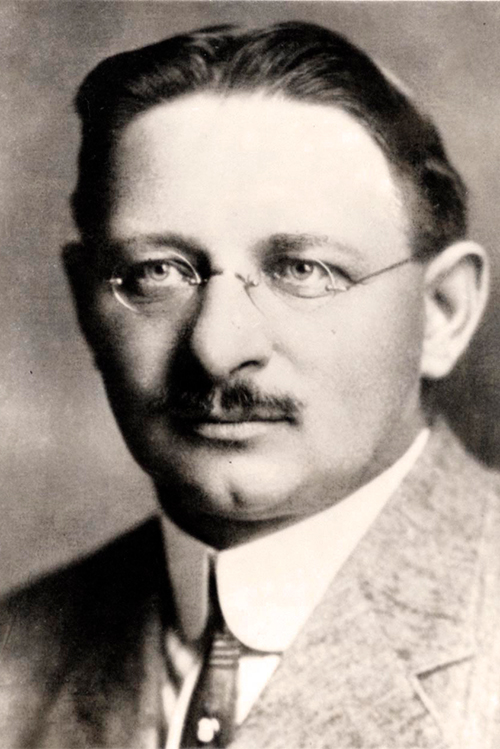
Sofus B. Nelson, dean

